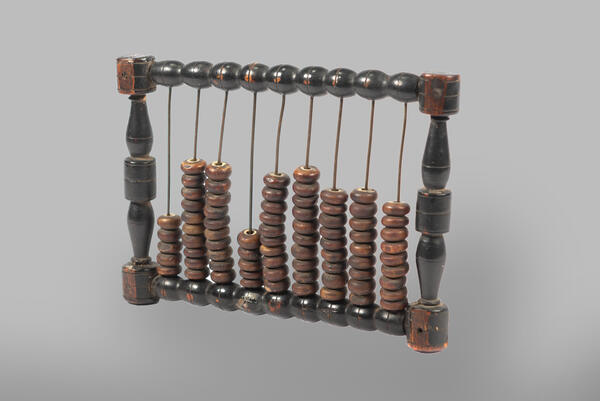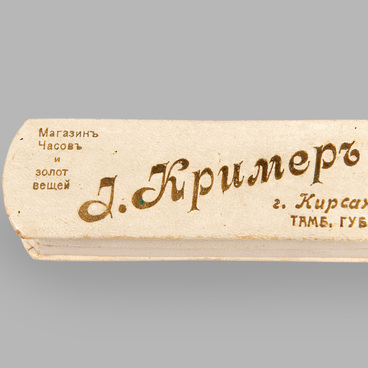The Kirsanov Local History Museum displays a 19th-century mahogany abacus that belonged to E. M. Boratynskaya. It is difficult for modern accountants and bookkeepers to imagine that just a few decades ago such an abacus was an essential device. The abacus was in use until the 1980s, when it was replaced by calculators. In tsarist Russia, there was a belief among merchants, financiers and factory owners: the posher the abacus, the better the business. Therefore, wires in the abacus were often made of brass or copper; the device was decorated with inserts of brass “for money to flow”. The abacus itself was made of various types of expensive wood. For a long time, abacuses were mainly used in Russia.
Mahogany abacus
Creation period
the late 19th century
Place of сreation
The Russian Empire
Dimensions
2x21x19 cm
Technique
wood, carving
Collection
2
Open in app#2
#6
The West did not know and does not know abacuses — you will not find them in any shops in Europe. Maybe that is why we do not appreciate this calculating device as highly as it deserves, we look at it as some kind of naive homemade makeshift device in the field of calculating devices.” <…> Foreigners, who first learned about abacus, appreciated it more than we did.
The famous scientist Y. I. Perelman wrote
#7
The abacuses were extremely simple, but up to the end of the 20th century, they could compete with the complex and expensive calculating machines of the Western countries.
Abacuses were used widely in everyday life: in shops, monasteries, offices and households. It came as no surprise to anyone if a noblewoman’s daughter, who had received a good education, began to do her father’s bookkeeping and later did her husband’s bookkeeping. And then such abacuses were sure to appear on her desk.
The abacuses displayed in the Kirsanov Local History Museum belonged to Elena Mikhailovna Boratynskaya, the daughter of M. A. Boratynsky, nephew of the poet Yevgeny Boratynsky. Her whole life was connected with medicine: she worked as a midwife in the Olkhovsky medical station, and then as a paramedic in the district hospital in the village of Gavrilovka 2. Apparently, Boratynskaya used mahogany abacus for her home bookkeeping.
Abacuses were used widely in everyday life: in shops, monasteries, offices and households. It came as no surprise to anyone if a noblewoman’s daughter, who had received a good education, began to do her father’s bookkeeping and later did her husband’s bookkeeping. And then such abacuses were sure to appear on her desk.
The abacuses displayed in the Kirsanov Local History Museum belonged to Elena Mikhailovna Boratynskaya, the daughter of M. A. Boratynsky, nephew of the poet Yevgeny Boratynsky. Her whole life was connected with medicine: she worked as a midwife in the Olkhovsky medical station, and then as a paramedic in the district hospital in the village of Gavrilovka 2. Apparently, Boratynskaya used mahogany abacus for her home bookkeeping.
#8
Mahogany abacus
#4
Ministry of Culture of the Russian Federation
read morehide
00:00
00:00
1x
Mahogany abacus
Creation period
the late 19th century
Place of сreation
The Russian Empire
Dimensions
2x21x19 cm
Technique
wood, carving
Collection
2
Open in app
Share





